Nine Ways To Kill Your Grass Quickly

Having the perfect lawn is a goal for many homeowners. Luscious green grass is a status symbol in many neighborhoods, but achieving a pristine lawn is a formidable challenge that isn’t for everyone. Whether you are sick of paying a high water bill or can’t dedicate the time required to maintaining healthy grass, sometimes it’s easier to give up on grass altogether. If you’re ready to say goodbye to your lawn, the first step is finding the best way to kill your grass.
There are many ways to kill your grass using common household items. Dish soap, vinegar, baking soda, and salt are all effective at killing grass. You can use boiling water to kill small areas of grass or spray herbicide to kill the entire lawn. Natural methods include the sheet composting method and solarization. If you live in a dry climate, you can let it die naturally.
There are many ways you can kill the grass in your yard, but some are better than others. Some methods are fast, while others take weeks. Furthermore, some methods are effective, but can make it difficult to grow anything in your soil for years to come. If you’re interested in learning the best way to get rid of your lawn, read the comprehensive list of grass-killing methods below.
Four Reasons Why You Might Need To Kill Your Grass
1. You Want To Start Over With New Grass
One of the most common reasons why homeowners kill the entire lawn is to start fresh and improve the way the lawn looks. Sometimes a lawn becomes overrun with weeds, and other times the grass type is sub-par. Starting fresh with new high-quality grass seed is a time-consuming and potentially costly investment, but it’s worth it if you plan on living in the same house for several years.
2. You’re Building A Patio Or Another Outdoor Space
Sometimes, people want to get rid of grass permanently because gravel or cement pavers will soon replace the lawn. If you are building a patio, rock garden, outdoor fire pit, or any outdoor space, you may want to get rid of a portion of your lawn. Killing grass in advance can make this DIY home renovation project a bit easier.
3. Water Conservation
The effects of climate change and inflation are now reflected in many utility bills. A lack of water and increased energy prices can result in water bills that are significantly higher than they once were. If you live in a dry climate, maintaining a green lawn can be expensive, especially in the summer. Killing grass and replacing it with gravel, a rock garden, or other grass alternatives can save you a lot of money over time.
4. Reduce The Need For Lawn Maintenance
In many parts of the world, lawns don’t take care of themselves. They require regular watering, fertilizing, pest control, and aeration. If you want your lawn to look perfect, then you need to do even more work to keep your grass pristine. If this constant maintenance is too much, then removing your grass altogether is a permanent solution to this burden.
Nine Effective Ways To Kill Grass In Your Yard
1. Herbicides
One of the most effective and fastest ways to kill grass is by using a specialized herbicide. Many weed killers also destroy grass, but it’s best to use a grass-specific herbicide. Some of these herbicides will kill your grass in as little as one week.
Generally, however, it takes between 10 and 14 days to kill your lawn using herbicide. Many herbicides are toxic and should be used with caution. If you have pets or small children, you must keep them away from the lawn. Check the specific product you use to understand how long the ground is likely to remain toxic.
2. Baking Soda
Baking soda is one of the most versatile items you have in your kitchen pantry. It is great at removing odors from the home, whitening teeth, and cleaning your home. It is also effective at killing unwanted grass in your yard.
This is a great method to use if you are only trying to kill a small portion of grass. If you are building a small rock garden next to your house, this is a great natural option. You should see results within two weeks.
Keep in mind that baking soda can alter the surrounding soil composition and boost the salinity. This can endanger nearby plants and the lawn that borders the treated area.
3. Vinegar
Vinegar, like baking soda, is known for its versatility in the home. From salad dressings and poached eggs to polishing glass and removing odors, this liquid does it all. You can even use some types of vinegar to kill unwanted grass on your property.
Vinegar is effective at killing grass, especially grass above the ground. It is not very effective at killing the entire root system. While this is not ideal for some, it is less likely to damage nearby plants, and won’t change your soil’s composition.
4. Salt
If you are looking for a permanent way to kill grass and any other plants in your soil, then salt is the answer. Salt can be used to kill grass and will do so in one to two weeks. While this is a natural and very effective method, it is also one of the most permanent.
When you add salt to your lawn, you will change the soil composition for many years. Very few plants grow in salty soil, which means your soil won’t grow much for years.
If you plan to cover the area with pavers or a type of gravel, this method works fine. Just ensure the salt does not spread to other areas, as it will change any soil it comes in contact with.
5. Sheet Composting
One unique method to kill your grass is called sheet composting. It is essentially the act of adding several layers on top of your grass to kill it quickly and naturally. Typically, you mow the lawn first, then add a layer of compost, then wood chips, and you can even add layers of cardboard and newspapers. Repeat these layers, and water the area regularly.
This process can take up to six weeks, but once the grass is dead, you are left with nutrient-rich soil, and you can start from scratch.
6. Dish Soap
Dish soap is not only great at removing grease from dirty dishes, but it is also a product that can help kill grass. Spray a mixture of dish soap and water on your lawn, and repeat the process for one to two weeks.
This method won’t permanently damage the soil, but it takes many applications. This makes it a good choice for those who want to kill a small portion of lawn, rather than a vast area.
7. Dry It Out
If you live in a dry climate, you can often kill your lawn by dehydrating it. If your lawn receives no water, it will dehydrate and eventually die. Once the grass is dry and yellow, you can easily dig it up and start fresh.
8. Solarization
Solarization is a slightly complicated process, but it’s effective and natural. To achieve this method, you must cover your lawn with black plastic sheets. After one to two months, the increased temperature, lack of sunlight, and water will eventually kill the grass.
Since this process involves no chemicals, it’s a great solution for those looking to grow a new lawn from scratch. Just remember, this method takes time and patience.
9. Boiling Water
Another natural way to kill specific areas of unwanted grass is the boiled water method. This method is simple, but requires caution. Simply take boiling water from your stovetop and pour it on the grass you want to kill.
This method can burn your skin if you aren’t careful. It works quickly, often within a week. Because you must transport the boiling water and pour it manually, the process can be cumbersome, especially when you need to kill a large area of grass.
Summing Up Easy Ways To Kill Your Grass Quickly
Whether your lawn is messed up beyond repair or your water bill is out of control, you may find yourself in a position where you must kill your grass. For those looking to grow new grass in the future, try natural ways like the sheet compost method or solarization.
Boiling water, dish soap, and vinegar are effective in small areas, while herbicide works better for large lawns. You can use baking soda or salt to kill grass, but these products will change your soil’s composition for many years, making it difficult to grow plants.
Related Guides:
- Eight Steps To Quickly Revive Grass After An Overnight Frost
- Why Are There Patches Of Dead Grass In My Yard?
- Ways To Make A Back Yard Beautiful Without Grass

Tom Gaffey is an expert writer who currently resides in Washington D.C. Tom has a passion for real estate and home improvement writing, as well as travel and lifestyle writing. He lived the last twelve years in Hawaii where he worked closely with luxury resorts and event planners, mastering his knowledge of aesthetics and luxury products. This is where he found his passion for home improvement and a keen interest in DIY projects. Currently, Tom resides in Washington D.C, and also working on his debut fiction novel.
More by Tom Gaffey











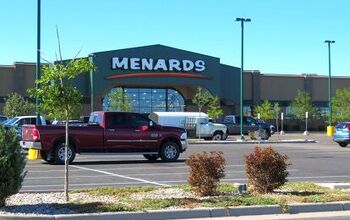

![10 Best Scroll Saws for 2022 [Ultimate Reviews & Buyer's Guide]](https://cdn-fastly.upgradedhome.com/media/2023/07/31/9070684/10-best-scroll-saws-for-2022-ultimate-reviews-buyer-s-guide.jpg?size=350x220)

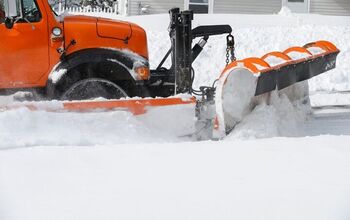


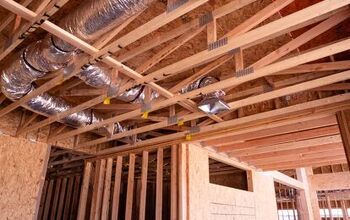
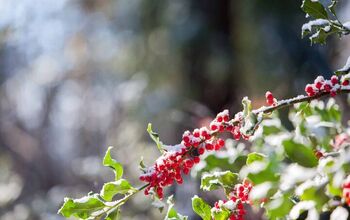

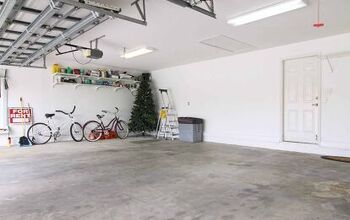

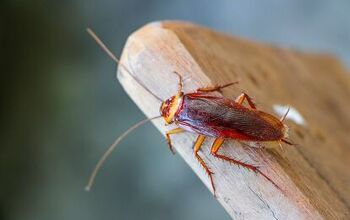
![Standard Dining Room Table Dimensions [for 4, 6, 8, 10 and 12 People]](https://cdn-fastly.upgradedhome.com/media/2023/07/31/9074335/standard-dining-room-table-dimensions-for-4-6-8-10-and-12-people.jpg?size=350x220)


